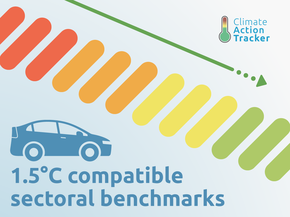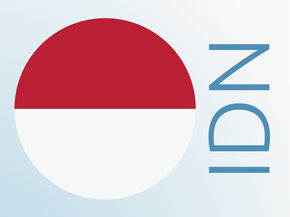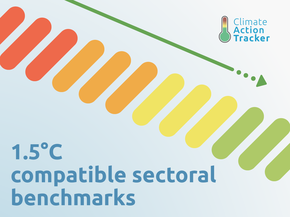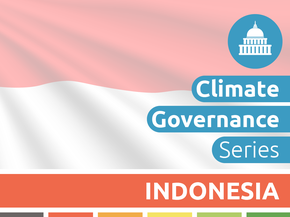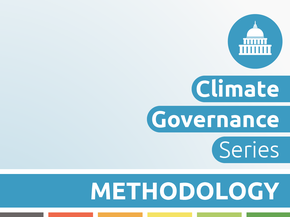Assumptions
Historical emissions
Historical data until 2021 for all sectors apart from LULUCF are taken from the PRIMAP-hist dataset. A full series of LULUCF emissions is constructed by combining data from Indonesia’s Second Biennial Update Report (BUR2) for 2000-2016 and data reported to the UNFCCC GHG inventory database for 1990-1999.
NDC and other targets
To quantify the 2030 NDC target we use the BAU and the sectoral distribution from Indonesia’s NDC document – taken at face value and without harmonisation to historical data (Republic of Indonesia, 2016). We consider that NDC targets are presented in SAR GWP. Therefore, we convert the values to AR4 GWP assuming that the 10-year historical ratio between emissions in SAR and AR4 remains stable up to 2030.
The CAT takes the absolute emissions level excluding LULUCF by 2030 given in the official documents for the unconditional targets.
The NDC does not provide an absolute emissions level for the 2020 target. To quantify the 2020 pledge, the CAT assumes the sectoral contribution to emissions reduction from Indonesia’s BUR2, which implicitly assumes that the 2020 pledge and the NDC targets are based on the same BAU. The BUR2 shows that the LULUCF sector is responsible for around 80% of the emissions reduction in 2020.
Current policy projections
We construct the range of current policy projections based on different assumptions of what might happen to the coal-heavy power sector in Indonesia in the future. Two scenarios are based on the reference “Business-as-usual” scenario from the Asia Pacific Energy Research Centre (APERC), which "assumes current policies and trends continue" (APERC, 2019), and on Indonesia’s 10-year electricity supply plan RUPTL 2021–2030 (Republic of Indonesia, 2021). A third scenario is based on the current policy projection developed by IESR and Agora Energiewende (IESR; Agora Energiewende, 2021). As this scenario was developed considering the 2019-2028 RUPTL, we adjust for the impact of the new 2021-2030 RUPTL.
According to APERC, the share of coal in power generation will decrease from 56% in 2016 to 55% in 2020, 50% in 2025 and then increase again to 51% in 2030. The APERC scenario is developed by an independent organisation and is used as an alternative development pathway since it is based on its own GDP and energy demand projections. The implementation of the RUPTL 2021-2030 leads to coal shares of 62% in 2025 and 64% in 2030.
Using emission factors from the IEA’s Current Policies Scenario for Southeast Asia, multiplied by the coal, oil, and gas shares for both TPES and electricity related emissions according to the APERC BAU scenario, gives the upper bound of emissions in our Current Policy Scenario for the energy sector, representing continued use of coal. The APERC BAU scenario foresees a 55 TWh increase coal generation from 190 TWh in 2025 to 245 TWh in 2030, in comparison to the RUPTL 2021–2030, which foresees a 65 TWh increase, from 220 TWh in 2025, to 285 TWh in 2030. The total electricity demand forecast by the RUPTL 2021-2030 was revised downwards by almost 100 TWh in 2028 compared the previous RUPTL and is now lower than that in the APERC scenario.
The current policy scenario from IESR and Agora Energiewende’s study focuses on the energy sector (electricity, heat, transport) and makes the following assumptions:
● 50% generation capacity from coal in 2050
● 60% biofuel and 40% fossil fuel for transport in 2050
● Up to 8% solar PV prosumer adoption
● Delayed introduction of GHG emission cost
To obtain current policies projections for total emissions excl. LULUCF, we construct energy non-CO2 and non-energy emissions projections. For each sector we create a projection based on the growth rates forecast in Indonesia’s Second Biennial Update Report (Republic of Indonesia, 2018a). We develop a range by looking at other possible sector-specific trends. For industry we apply GDP growth rates from our post-COVID GDP series, which includes forecasts from the IMF, World Bank, ADB, and OECD (ADB, 2022; IMF, 2022; OECD, 2022; World Bank, 2022a). For agriculture, waste, and other sectors, we apply a five-year trend. The two alternatives create a minimum and maximum current policies projections for energy non-CO2 and non-energy emissions.
We subsequently harmonise these time series with energy-CO2 projections. The emissions levels are sensitive to the method of harmonisation. Thus, we apply two methods:
● Apply growth rates of the calculated scenarios to the last historical year;
● Adjust all future years by the difference of the calculated scenario and the inventory in the last available year (2016).
Both methods are included in the range presented for current policy projections.
Global Warming Potentials values
The CAT uses Global Warming Potential (GWP) values from the IPCC's Fourth Assessment Report (AR4) for all its figures and time series. Assessments completed prior to December 2018 (COP24) used GWP values from the Second Assessment Report (SAR).
Further analysis
Country-related publications
Stay informed
Subscribe to our newsletter

